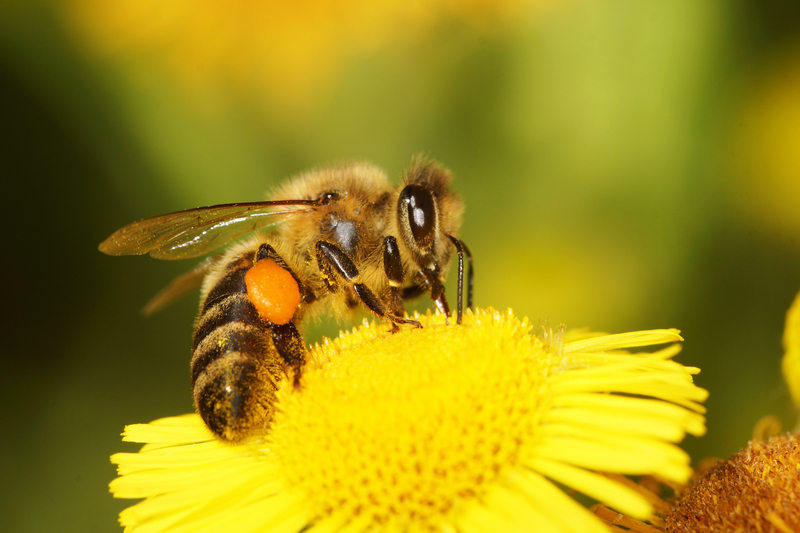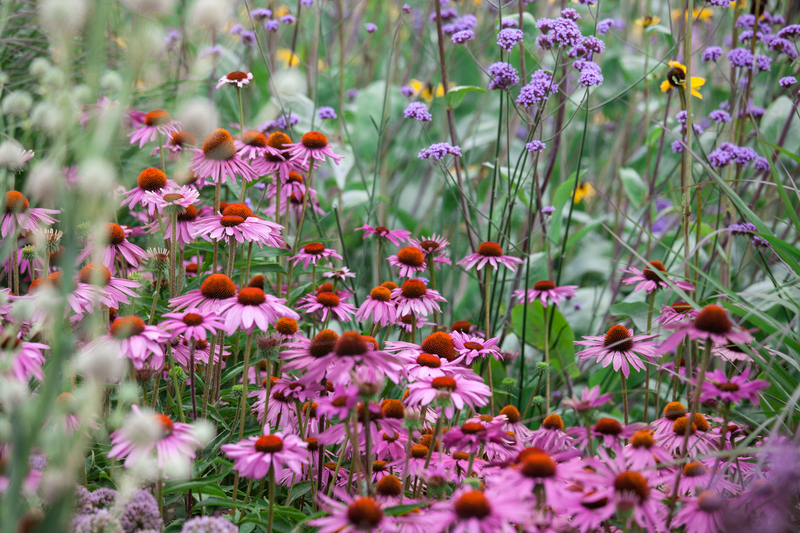Essential Gardening Tools for Every Hobbyist
Posted on 08/06/2025
Essential Gardening Tools for Every Hobbyist
Embarking on a new gardening journey is an exciting adventure. Whether you have a compact balcony, small backyard, or a sprawling landscape, having the right gardening tools will undoubtedly shape your success and enjoyment. This comprehensive guide will walk you through the must-have gardening tools for hobbyists and offer detailed insights to help you choose the best options for your unique gardening aspirations.

Why Quality Gardening Tools Matter
Gardening tools are more than just accessories--they are extensions of the gardener's hands and imagination. Investing in quality gardening equipment not only makes tasks such as planting, pruning, and weeding easier, but also ensures healthier plants, greater efficiency, and less physical strain. Well-crafted tools last longer, require less frequent replacement, and, with proper care, can even be handed down for generations.
Must-Have Gardening Tools for Every Gardener
Whether you're a beginner or an experienced horticulturist, the following list covers the essential gardening tools every hobbyist should own:
- Hand Trowel
- Garden Fork
- Pruning Shears (Secateurs)
- Garden Gloves
- Watering Can / Hose
- Rake
- Hoe
- Spade
- Wheelbarrow
- Garden Kneeler or Pad
Let's dive deeper into the function, advantages, and selection tips for each of these vital gardening tools.
1. Hand Trowel
A hand trowel is the quintessential tool for every gardener. This small yet mighty implement is used for:
- Digging small holes for planting or transplanting seedlings
- Removing weeds with precision
- Mixing soil conditioners and fertilizers
When choosing a hand trowel, opt for one with a comfortable, ergonomic handle and a robust, rust-resistant blade made from stainless steel or carbon steel. A quality trowel ensures years of easy planting and soil work.
2. Garden Fork
The garden fork is undisputedly one of the best gardening tools for breaking up dense soil, turning compost, and aerating. The sharp tines make it easier to:
- Loosen compacted dirt and reduce soil clumps
- Incorporate organic matter into garden beds
- Extract root vegetables safely
Look for a garden fork with strong, forged tines and a sturdy handle. Forged models are much less likely to bend under pressure than cheaper alternatives.
3. Pruning Shears (Secateurs)
For maintaining bushy plants, shaping shrubs, or harvesting herbs, a sharp pair of pruning shears is essential. These are designed to:
- Trim flower stems cleanly
- Prune back perennials and groundcovers
- Remove dead or damaged foliage
Choose bypass pruners for live, green wood and anvil pruners for tougher, dead branches. Comfort-grip handles and replaceable blades add extra convenience and durability to this critical gardening tool.
4. Garden Gloves
Never underestimate the importance of a good pair of gardening gloves. They protect your hands from:
- Thorns and prickly stems
- Blisters while digging or raking
- Soil-borne bacteria and fungi
Different tasks may call for different glove materials. Leather gloves are optimal for tough jobs, whereas lightweight, rubber-coated gloves offer dexterity and protection during planting and weeding.
5. Watering Can or Hose
Consistent watering is vital for plant health, and the right watering tool makes the job easier and more efficient. Consider:
- Watering Can: Provides controlled, gentle watering--ideal for seedlings, container gardens, and delicate plants.
- Garden Hose: Ensures wide coverage and convenience for larger gardens. Attach a spray nozzle for adjustable pressure and distribution.
Look for rust-proof cans with removable spouts and lightweight hoses that won't kink or tangle easily. An ergonomic design minimizes hand fatigue over time.
6. Rake
A rake is indispensable for clearing leaves, grass clippings, and debris from lawns and garden beds. Rakes come in several variations:
- Leaf rakes: Lightweight, wide-tined; perfect for gathering leaves and loose debris.
- Garden rakes: Strong, short-tined; better for leveling soil, spreading mulch, and breaking up clods.
Choose based on your specific needs; many hobbyists keep one of each for maintenance throughout the gardening year.
7. Hoe
Weeding and cultivating soil are made easier with a garden hoe. This classic tool is perfect for:
- Breaking up hardened or rocky earth
- Creating furrows for seeding
- Keeping beds weed-free by chopping at roots
Look for a hoe with a sharp blade and a durable, comfortable handle. Different designs (draw hoes, scuffle hoes, stirrup hoes) cater to various gardening styles and personal preferences.
8. Spade
No gardening toolkit is complete without a sturdy spade. Unlike trowels, spades have longer handles and larger, flatter blades, which are ideal for:
- Digging planting holes for trees and shrubs
- Edging garden beds and lawns
- Moving large quantities of soil, sand, or compost
Pick a spade with a heavy-duty blade and a "D-shaped" or ergonomic handle to maximize leverage and comfort during use.
9. Wheelbarrow
Moving heavy material or multiple garden items becomes effortless with a wheelbarrow. It is essential for:
- Transporting soil, mulch, rocks, and plants
- Hauling garden debris to the compost or disposal site
- Simplifying big jobs--for example, after a storm or seasonal cleanup
Modern wheelbarrows come in both steel and heavy-duty plastic designs. A sturdy wheel, stable balance, and comfortable grips are critical for efficient use.
10. Garden Kneeler or Pad
Gardening often requires working at ground level, which can be tough on your knees and back. A garden kneeler or pad provides:
- Cushioned relief while planting, weeding, or harvesting
- Support for standing back up after kneeling
- Foldable designs for easy storage and portability
This affordable yet invaluable accessory keeps gardening comfortable, even for extended sessions.
Choosing the Right Gardening Tools: What to Consider
With countless brands and models available, selecting the best gardening equipment may feel overwhelming. Here are vital factors to ensure every purchase is worthwhile:
- Material Quality: Stainless steel and forged metal resist rust and wear, while hardwood handles are sturdy yet lightweight.
- Ergonomic Design: Look for padded or contoured grips and balanced, lightweight construction to reduce hand fatigue.
- Intended Use: Choose tools tailored to your garden's size, soil type, and typical maintenance tasks.
- Maintenance: Tools that are easy to clean and maintain last much longer. Replaceable parts (like blades) offer added value.
- Budget: While it's tempting to grab the cheapest options, investing in high-quality essentials pays off in performance, comfort, and durability.
Caring for Your Gardening Tools
Even the best garden tools require regular maintenance. Proper care not only extends tool life but also helps keep your plants healthy by reducing the risk of disease transfer. Here are expert tips to maintain your gardening essentials:
- Clean after each use: Brush off dirt and rinse metal parts. Dry immediately to prevent rust.
- Sharpen blades regularly: Sharp blades make cutting and digging safer and more effective.
- Oil metal parts: Occasionally apply light machine oil to metal surfaces, especially after cleaning or sharpening.
- Inspect wooden handles: Sand down splinters and rub the wood with linseed oil to prevent cracking.
- Store tools properly: Hang or place tools in a dry, ventilated area. Avoid leaving them outdoors, where they'll weather and degrade.
Top Brands for Hobbyist Gardeners
While many reputable manufacturers produce quality gardening tools, a few stand out for their reliability and innovative designs:
- Fiskars: Renowned for sharp cutting tools and ergonomic equipment.
- Corona: Specializes in pruners, loppers, and saws for precise trimming.
- DeWit: Classic European craftsmanship and durable, hand-forged designs.
- Felco: Swiss-made pruners praised for precision and durability.
- Spear & Jackson: Traditionally forged garden spades and forks with a long heritage.
Explore these brands in local garden centers or trusted online retailers for tools that blend functionality, comfort, and longevity.

Beginner's Toolkit: What to Prioritize?
If you're new to the gardening world, you may be wondering which essential gardening tools to purchase first. Here's a practical starter toolkit for hobbyists:
- Hand trowel
- Pruning shears
- Garden gloves
- Watering can
- Rake or hoe (based on your soil and task needs)
Begin with these basics and expand as your interest and garden grow. Personalized preferences and discoveries make gardening all the more rewarding!
Conclusion: Equip Yourself for Gardening Success
Cultivating a beautiful, productive green space hinges on having the right gardening tools in your shed or garage. Each tool on this list plays a specific role, from planting and watering to pruning and soil care. By investing in what suits your garden's needs--and maintaining your tools with regular care--you'll find greater ease, success, and enjoyment in every season.
Happy gardening! Unlock your green thumb and let these essential gardening tools support every step of your horticultural adventure.

